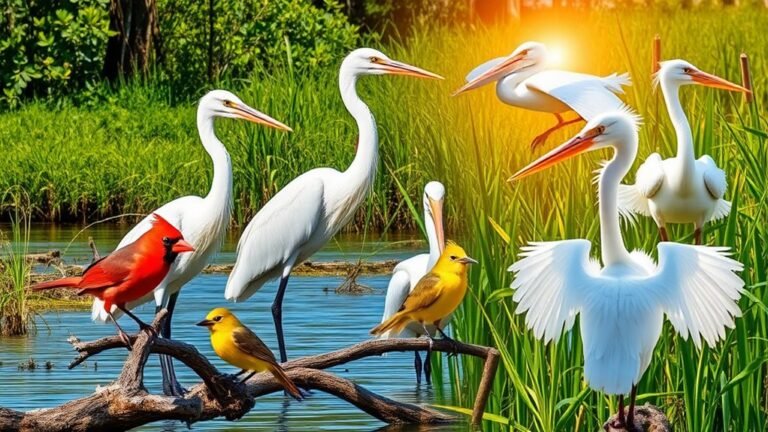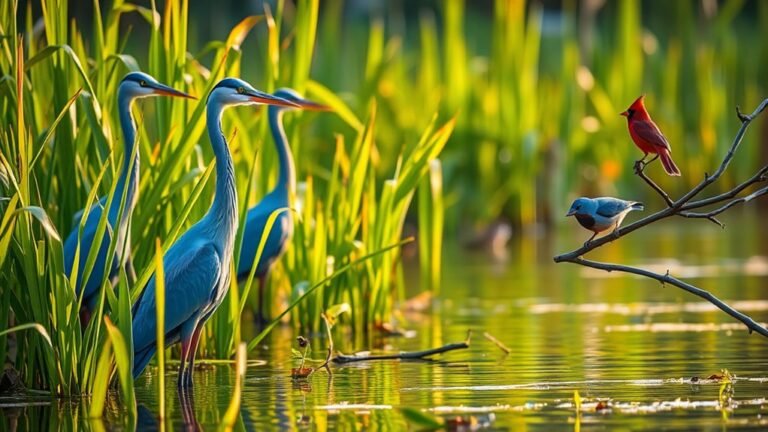Moths That Look Like Bird Poop: Incredible Disguises in Nature
Moths that look like bird droppings are a great example of how animals adapt to survive. This camouflage helps them escape predators. These moths match the colors and patterns of feces, allowing them to blend into their environments. This adaptation increases their chances of survival.
You might wonder how they develop such accurate designs. The answer lies in their behavior and habitats. They evolve over time, enhancing features that help them stay hidden. This process helps them thrive in various settings, showcasing the remarkable ways nature works.
Key Takeaways
Some moths mimic bird droppings to hide from predators. This mimicry helps them blend in with their surroundings, making them harder to spot. Moths that are better at this disguise survive longer, which helps them reproduce. They can change their colors and patterns according to their habitat and the seasons. Additionally, moths often stay still to enhance their appearance, looking more like actual bird droppings. This combination of physical and behavioral traits makes them effective at avoiding detection.
The Science of Camouflage in Moths

Moths have unique adaptations that help them survive, primarily through camouflage.
These insects have color patterns that blend into their surroundings, making it hard for predators to spot them.
Natural selection favors moths with better coloration, allowing them to survive and reproduce. This leads to a diverse range of disguises over generations.
Some moths even look like bird droppings, gaining extra protection since many predators avoid waste.
As you learn about these adaptable creatures, you'll discover the amazing ways nature helps them survive.
Evolutionary Benefits of Disguise
Moths have evolved to use disguise, which helps them escape predators and survive better. For example, some moths mimic bird droppings. This camouflage reduces their chances of being seen.
- Disguise protects them from many predators.
- Better survival rates lead to more offspring.
- Mimicry helps maintain balance in their ecosystems.
- Camouflage allows more effective searching for food.
Through disguise, moths highlight the relationship between evolution and survival.
Their adaptations show how nature helps them thrive in changing environments. This fascinating strategy allows them to continue living successfully despite threats.
Key Species That Mimic Bird Droppings

Many species of moths mimic bird droppings to survive. The common bird-dropping moth is a prime example. Its colors and textures blend with bird poop, helping it avoid predators.
Another example is the Lonomia obliqua, which also camouflages itself effectively against threats. This mimicry protects moths from birds and shows how they adapt to their environments.
How Moths Develop Their Camouflage
Moths develop their camouflage through genetic adaptation and environmental factors. Their genes control coloration and patterns, helping them look like bird droppings. Moths can change their appearance based on their surroundings, which helps them survive.
- Moths use specific pigments to mimic textures and blend in.
- Their color can change due to their habitat and seasonal shifts.
- Some moths can change their appearance quickly in response to environmental changes.
- Moths with better camouflage have a higher chance of survival and reproduction.
This ability to adapt makes moths interesting and highlights their connection to nature. Their clever methods of blending into their environments not only protect them but also showcase the intricate relationship between species and their habitats.
Behavioral Adaptations for Survival

Moths use various behavioral strategies to survive. These strategies help them evade predators effectively. For example, some moths stay still and imitate droppings when a threat approaches. This allows them to blend into their surroundings.
Other moths fly erratically to confuse potential attackers. Moths also select roosting sites that offer good camouflage. This choice further protects them from predators.
These behaviors do more than provide temporary safety; they significantly increase moths' chances of survival. Understanding these behaviors highlights the fascinating ways moths adapt in nature.
Comparing Moths to Other Mimicking Species
Mimicry in nature shows how species adapt to survive. Moths are impressive mimics, but other species also have unique strategies.
- Leaf insects look like leaves. This helps them hide from predators.
- Stick insects resemble twigs. They confuse predators by blending into their surroundings.
- Cuttlefish can change color and texture. This allows them to match vibrant ocean environments.
- Frogfish use lures that look like prey. This trick attracts unsuspecting fish.
These examples highlight nature's clever designs for survival. Each species demonstrates how life adapts to thrive.
The Role of Color and Texture
Color and texture are important for survival in nature. Moths like to mimic bird droppings to stay safe. Their colors, such as gray, brown, and green, help them blend into their environment. This makes them look like real droppings.
Texture also matters; some moths have rough surfaces or mottled patterns that enhance the disguise. This helps keep them hidden from predators.
By observing these adaptations, you can appreciate the clever designs found in nature. These features highlight the shared struggle for survival among different species.
Understanding these traits can help us connect with the natural world around us.
Habitat Preferences of Moth Species
Moths that look like bird droppings thrive in specific habitats with shelter and food. These species are often found in wooded areas. Leaf litter and tree bark help them blend into their surroundings. Their adaptations allow them to camouflage effectively. By choosing areas with plenty of host plants, they secure a reliable food source.
Key habitat features include:
- Dense foliage for shelter
- Varied microhabitats for temperature control
- Close proximity to host plants for nourishment
- Natural debris for better disguise
These habitats are crucial for their survival. They provide protection from predators and support their mimicry strategies. Understanding these environments enhances our appreciation of these unique moths.
The Impact of Predation on Moth Evolution
Predators significantly influence how moths evolve. Some moth species have unique adaptations that help them escape these threats. For example, certain moths mimic bird droppings. This disguise helps them avoid being seen by birds that want to eat them. As a result, these moths have higher survival rates.
The ability to blend in with their surroundings improves their chances of survival. This camouflage also helps certain traits persist in moth populations over time. These traits continue to develop as moths respond to predation pressure.
The connection between predation and moth evolution reveals how adaptable these insects are. This ongoing dynamic between moths and their predators fascinates researchers and nature lovers.
Research and Studies on Moth Camouflage
Researchers study moth camouflage to understand how it impacts their survival. They examine moth body shapes and mimicry strategies, such as resembling bird droppings. This camouflage helps moths avoid predators and highlights the connection between form and function in nature.
- Moths that look like bird droppings blend well with their surroundings.
- Mimicry strategies change as predators develop new traits.
- Scientists conduct field observations and laboratory experiments.
- Genetic research shows how camouflage traits are passed down.
This knowledge not only informs us about moths but also offers insight into animal adaptations in nature.
The Future of Moth Conservation and Research
Moth conservation and research focus on the importance of moths in ecosystems and the threats they encounter. Protecting moth habitats is crucial due to climate change and habitat loss.
Future research should examine how moth populations change, their behaviors, and their role in food webs and pollination. Involving local communities can boost awareness and support for conservation efforts.
By encouraging collaboration and sustainable practices, we can improve ecosystem health. You have the chance to contribute to moth conservation and help ensure their survival for future generations.
Join this effort to make a positive impact on the environment.
Frequently Asked Questions
Do All Moths That Mimic Bird Poop Belong to the Same Family?
Not all moths that look like bird poop belong to the same family. Different moth families use similar strategies for camouflage. This mimicry shows how nature adapts in creative ways. You might find it interesting to learn about the variety of moths that use this tactic.
How Do Moths Know When to Employ Their Camouflage?
Moths use camouflage to protect themselves from predators. They look for movement and visual signals in their environment to identify threats. When danger is nearby, they change their color and posture to blend in with their surroundings. This ability helps them survive.
Are There Any Predators That Can See Through This Disguise?
Some predators, like birds that can see more colors, can spot animals hiding in camouflage. Different predators have different abilities, which affects how landscapes change and how species survive. Animals that blend in well have a better chance of survival.
What Are the Main Threats to Moth Populations With This Camouflage?
Moths face major threats from habitat loss and climate change. These issues decrease their populations and disrupt ecosystems. As their environments change, moths struggle to survive.
Can Other Insects Also Mimic Bird Droppings Like Moths?
Yes, other insects can mimic bird droppings. Some beetles and larvae look like bird poop. This disguise helps them avoid being eaten by predators. This form of mimicry shows how insects use simple tricks for survival in nature.

Ava is a bird enthusiast and nature lover who has spent countless hours observing and learning about the fascinating world of birds. With a passion for sharing her knowledge and inspiring others to appreciate the beauty of birds, Ava writes about her experiences and insights on avianadmirer.com.







